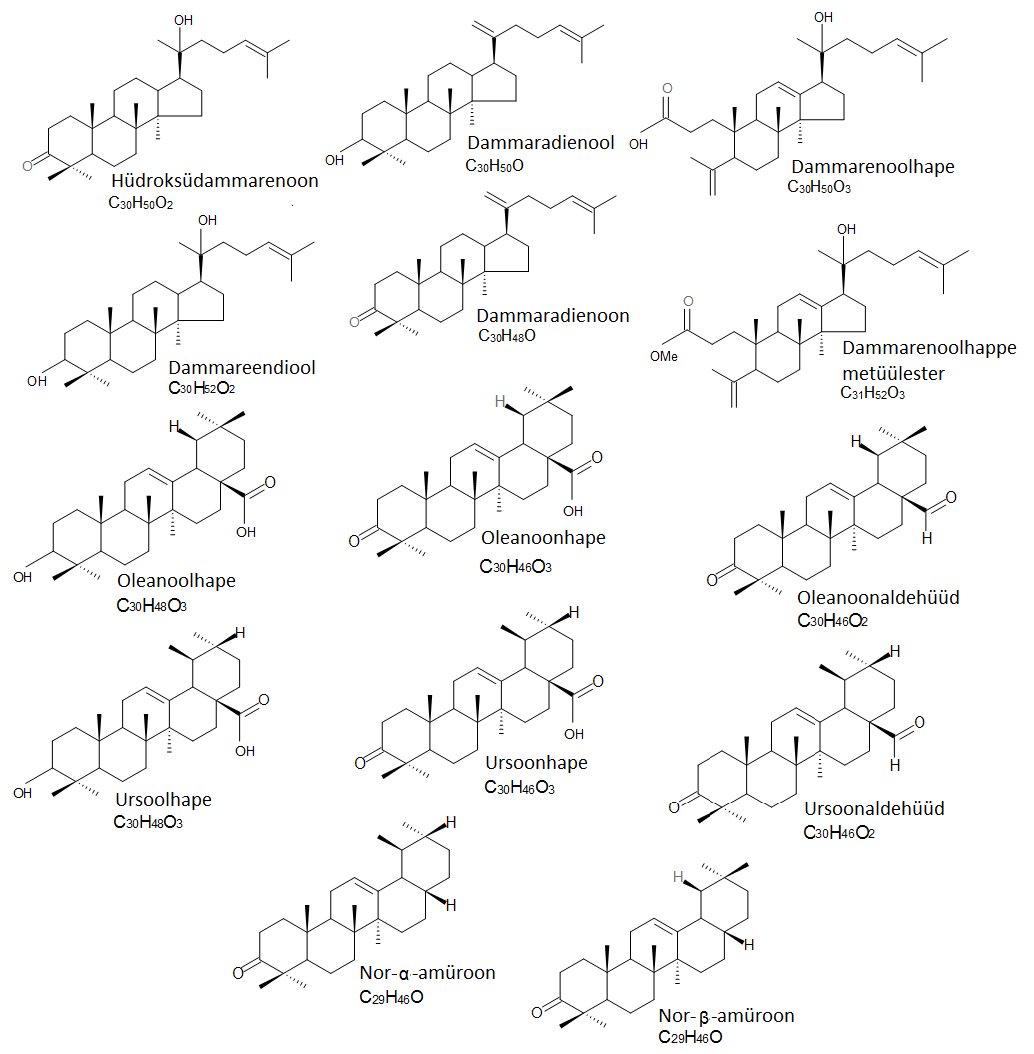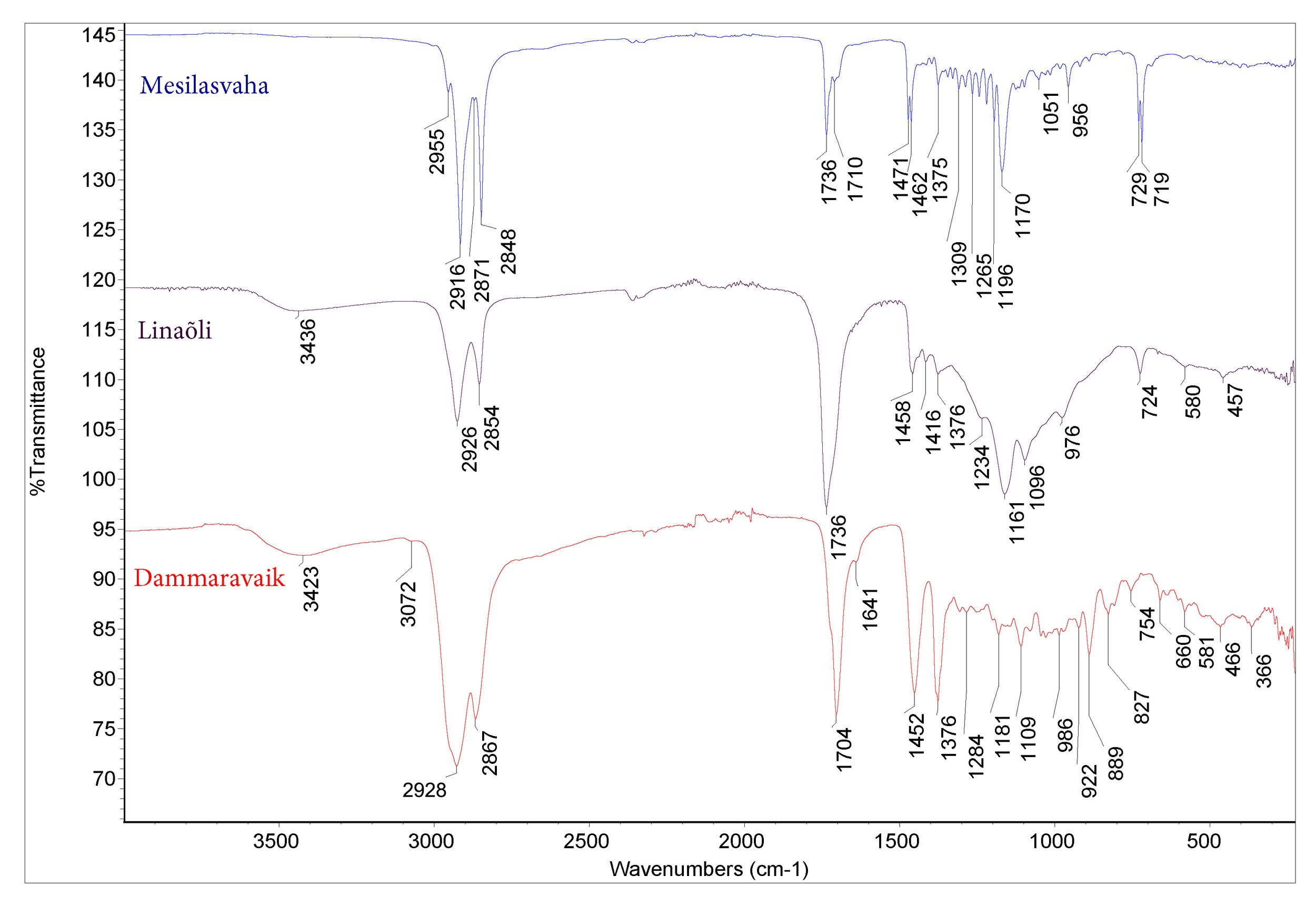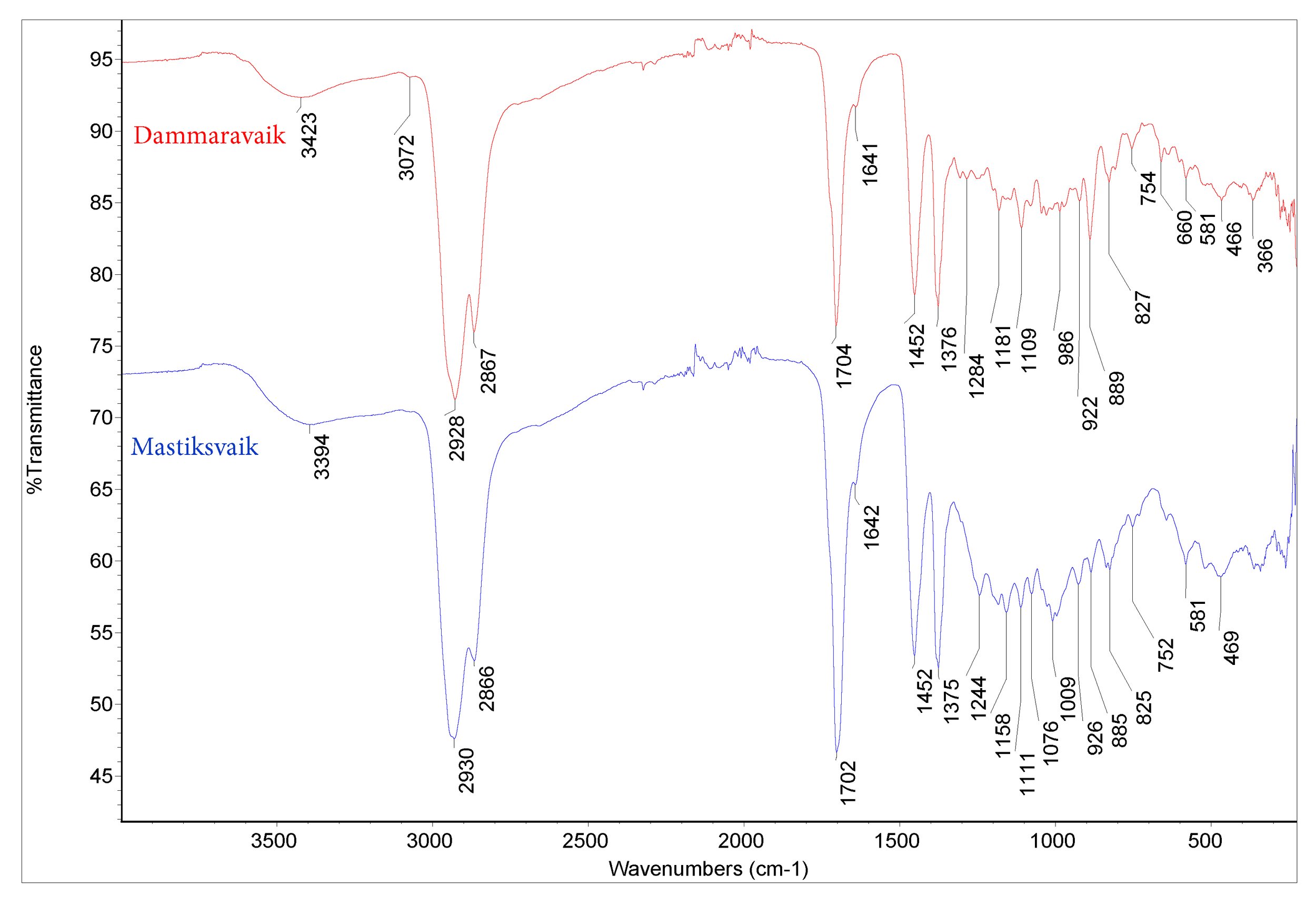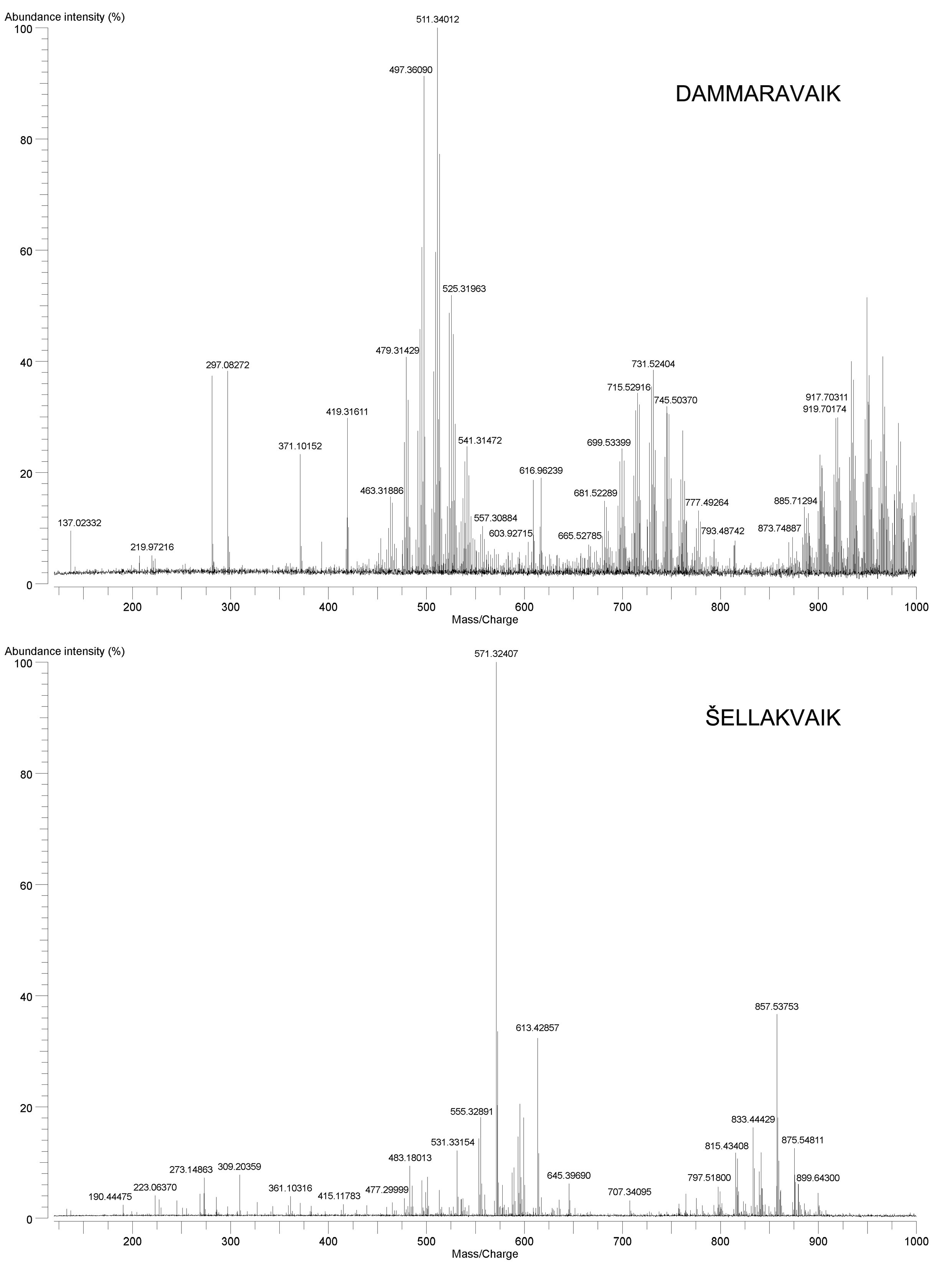INVESTIGATION OF VARNISHES WITH DIFFERENT ANALYTICAL METHODS
Autor:
Anu Teearu, Signe Vahur, Ivo Leito
Year:
Anno 2015
Category:
Research
Varnish has an important role in the composition of an art object. It adds decorative value to
the object and helps to protect it from light, humidity, dust particles, etc., all of which
accelerate the changes in the chemical composition of the varnish. In order to identify the
varnish used on an art object different analytical methods can be used. However, the
requirements for the methods are high. Varnish samples are usually a complex mixture of
different components, small in size and amount and difficult to dissolve. IR and Raman
spectroscopy are simple and fast methods that allow distinguishing between different
material classes, but the identification of the various components in multi-component sample
spectra is difficult due to overlapping of peaks in IR analysis and the interference of
fluorescence in Raman spectroscopy. GC-MS, LC-MS and different mass spectrometers (e.g.
FT-ICR-MS and ToF) coupled with soft ionization techniques such as MALDI, ESI, APCI
are very efficient in identifying the chemical composition of the sample. At the same time the
different chromatographic and mass spectrometric methods mentioned above are more labour
intensive (requiring sample preparation) and demanding (solvent suitability must be taken
into account etc.) compared to convenient ATR-FT-IR spectroscopy. Combining IR or Raman
methods with different mass spectrometric and chromatographic methods enables to obtain a
fairly comprehensive picture of the varnish composition.
REFERENCES:
1. Mills, J. S. The Organic Chemistry of Museum Objects, 2nd ed. Butterworth-Heinmann, Oxford, 2003.
2. de la Rie, E. R. Photochemical and thermal degradation of films of dammar resin. – Studies in Conservation. 1988, 33, 57–70.
3. Gettens, R. Painting materials “short encyclopaedia”. Dover Publications, New York, 1966.
4. Colombini, M. P., Modugno, F. Organic Mass Spectrometry in Art and Archaeology. John Wiley & Sons Ltd, Chichester, United Kingdom, 2009.
5. Masschelein-Kleiner, L. Ancient binding media, varnishes and adhesives, 2nd ed. ICCROM, Rome, 1995.
6. Gilman, H. Organic Chemistry, an Advanced Treatise. New York: Wiley: London: Chapman & Hall, 1953. Vol. 4, pp 582.
7. Vahur, S., Teearu, A., Haljasorg, T., Burk, P., Leito, I., Kaljurand, I. Analysis of dammar resin with MALDI-FT-ICR-MS and APCI-FT-ICR-MS. – Journal of Mass Spectrometry, 2012, 47, 392–409.
8. Scalarone, D., Duursma, M. C., Boon, J. J., Chiantore, O. MALDI-TOF mass spectrometry on cellulosic surfaces of fresh and photo-aged di- and triterpenoid varnish resins. – Journal of Mass Spectrometry, 2005, 40, 1527–1535.
9. van der Doelen, G. A., van den Berg, K. J., Boon, J. J. Comparative chromatographic and mass-spectrometric studies of triterpenoid varnishes: fresh material and aged samples from paintings. – Studies in Conservation, 1998, 43, 4, 249–264.
10. van der Doelen, G. A., van den Berg, K. J., Boon, J. J., Shibayama, N., de la Rie, E. R., Genuit, L. W. Analysis of fresh triterpenoid resins and aged triterpenoid varnishes by high-performance liquid chromatography-atmospheric pressure chemical ionisation (tandem) mass spectrometry. – Journal of Chromatography A, 1998, 809, 1, 21–37.
11. Vahur, S. Maalide keemilise koostise uurimine FT-IR spektroskoopia meetodil. – Renovatum, 2004, 53–58.
12. Sibul, K. Traditsiooniline ja kaasaegne materjal polükroomsete puitobjektide konserveerimises, I osa. – Renovatum, 2004, 65–75.
13. Derrick, M. Fourier. Transform Infrared Spectral Analysis of Natural Resins used in Furniture Finishes. – Journal of the American Institute for Conservation, 1989, 28, 1, 43–56.
14. de Hoffmann, E., Stroobant, V. Mass Spectrometry. Principles and Applications, 3rd ed. John Wiley & Sons Ltd, Chichester, United Kingdom, 2007.
15. Hamilton, R. J. Lipid Analysis in Oils and Fats, 1st ed. Blackie Academic & Professional, London, United Kingdom, 1998.




